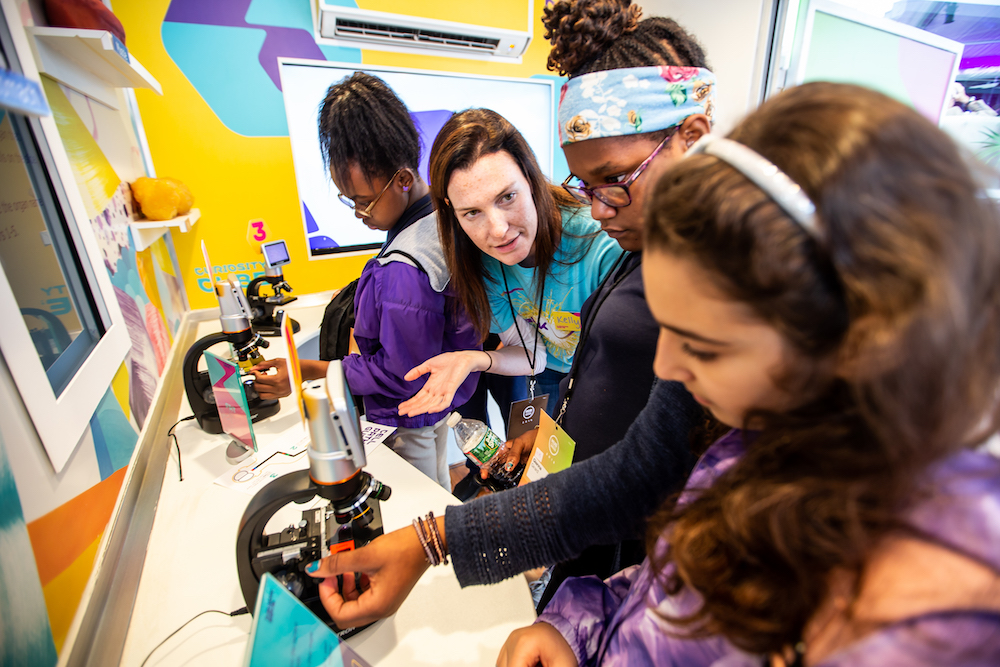At a time when parents are doing double duty as caretakers AND teachers, support from smart, innovative organizations is sorely needed. Our President Jen Reddy recently caught up with Stephanie Couch, Executive Director of the Lemelson-MIT Program at the School of Engineering at MIT, to talk about how she and her team are encouraging students to learn and create during this pandemic and beyond.
The Lemelson-MIT Program, founded 25 years ago, runs the national Lemelson-MIT Student Prize competition for college-age inventors (with graduate students and undergraduate teams). The 2020 winners, who receive cash prizes, will be announced on April 28. The program also has several initiatives for K-12 students and educators, which help young people learn the unique ways inventors find and solve problems that matter.
Learn more about the program, what resources are available to parents and their children, and how we can all progress and learn during this pandemic by reading Jen and Stephanie's exchange:
Jen Reddy: In the last few years, there has been a major emphasis on STEM and encouraging innovation with our youth, especially girls. What is driving that?
Stephanie Couch: America and the world at-large face pressing problems (pandemics, climate change, etc.). We need to bring all of our creative talent and problem solving skills to the table if we are going to solve these incredibly complex challenges. We need insights and expertise from many different disciplines, but science and engineering fields are particularly key components of teams that will develop breakthrough technological solutions. According to the U.S. Patent and Trademark Office, women made up only 28% of the total science and engineering work-force in 2015. Worse yet, only 12% of inventors named on granted patents were women. Some fields are better represented by women, such as biotechnology (25% female inventor rate) and pharmaceuticals (23% female inventor rate), but we have a long way to go to get to gender parity.
JR: Can you tell us a bit about why you created the high school InvenTeams and middle school JV InvenTeams? Who has been lucky enough to get a grant from you?
SC: Our InvenTeams national grants initiative has helped almost 260 teams of high school students across the U.S. find problems in their local communities and develop solutions through working prototypes of inventions. Examples from this year’s teams include a device to sterilize the TSA bins at airports, a device that keeps cigarette butts from contaminating water and poisoning fish in a terminus lake, a waterproof robot and camera that can help scientists restore marine life, and a device to vacuum plastics out of sand at the beach.
We have learned that all young people, regardless of their prior STEM experiences, can learn to invent. Students that have not worked with tools or technologies to design and build struggle more than others since teams only have one school year to build their invention. Our JV InvenTeam curriculum, which we offer for free on our website, helps prepare students for the more rigorous work we do with InvenTeams. JV InvenTeams focus on building hands-on skills before they are needed to build a working prototype.
JR: This is a challenging moment for parents on a number of levels, but the hardest being they are now teacher AND parent. How is Lemelson trying to support?
SC: Numerous groups at MIT work with K12 students and educators. When we heard schools were shutting down, we jumped on a Zoom session together to determine what we could do together to help. The Full STEAM Ahead website was created featuring seven week-long care packages. Each package has a theme and includes videos and hands-on activities for students of different age/grade levels (K-12). The Lemelson-MIT Program’s invention education resources are featured in week 2 and week 6.
The week 6 package goes live on April 27. We are also hosting a live webinar celebration on June 17 at 5pm ET featuring our 2020 collegiate Student Prize winners and our 14 high school InvenTeams. Information will soon be available here.
JR: I think we are all trying ways to innovate during this pandemic. Sometimes it's hard to know HOW. What is your advice to us everyday people who want to keep our minds sharp? Or feel like we can still progress and learn?
SC: Possibilities for new inventions are everywhere! I took a notepad and went room by room to try to identify problems in need of a solution in my house. I found roughly 50 problems that I could work on. I’ve also been collecting packaging materials and other throw away items that can be re-used to create miniature models of my inventions. Will I have a breakthrough? Who knows! I will have a lot of fun in trying to come up with something new and novel, useful and unique, and not obvious to one skilled in the art (i.e. an invention!).
